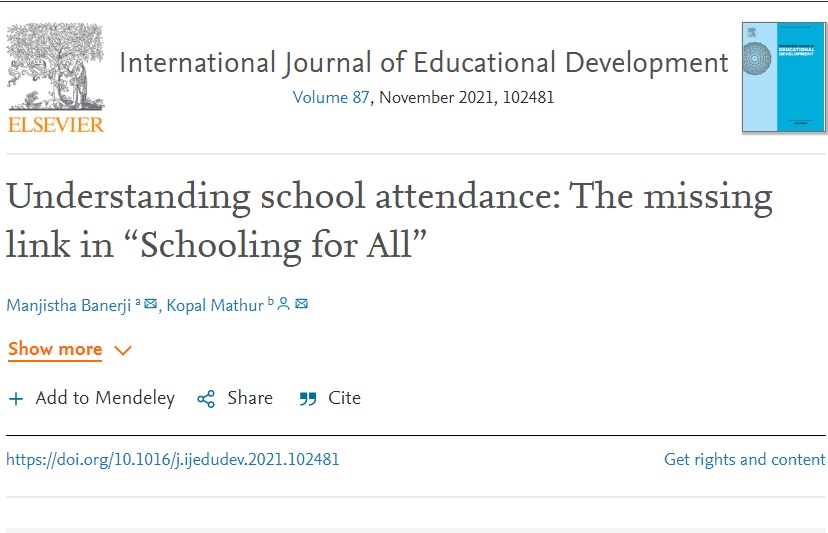
India is close to its goal of achieving 100 % school enrolment for children in the age group of 5–16 years. However, this does not correspond with universal school attendance. Not all children who are enrolled attend school regularly. Enrolment is, at best only “nominal” for them. In this study, we examine the ‘demand’ and ‘supply’ side factors behind low attendance by drawing upon a new dataset on adolescents in India- Understanding Adults and Young Adolescents (UDAYA) for Bihar and Uttar Pradesh. Results indicate that girls and older students are more likely to be absent from school. Married girls were more likely to be absent than their unmarried peers. Engaging in unpaid work also deter children from attending school regularly, although surprisingly, there is no significant difference between children who are not working and children engaged in paid work in terms of absenteeism. Religion, affluence, and school type also have a significant influence on attendance. Surprisingly, absenteeism did not emerge to be significant when proficiency in math as a marker of academic performance is taken into consideration. Provisioning of infrastructure can be a particularly effective means towards increasing attendance, as can be the contribution of teachers when considered as positive role models.